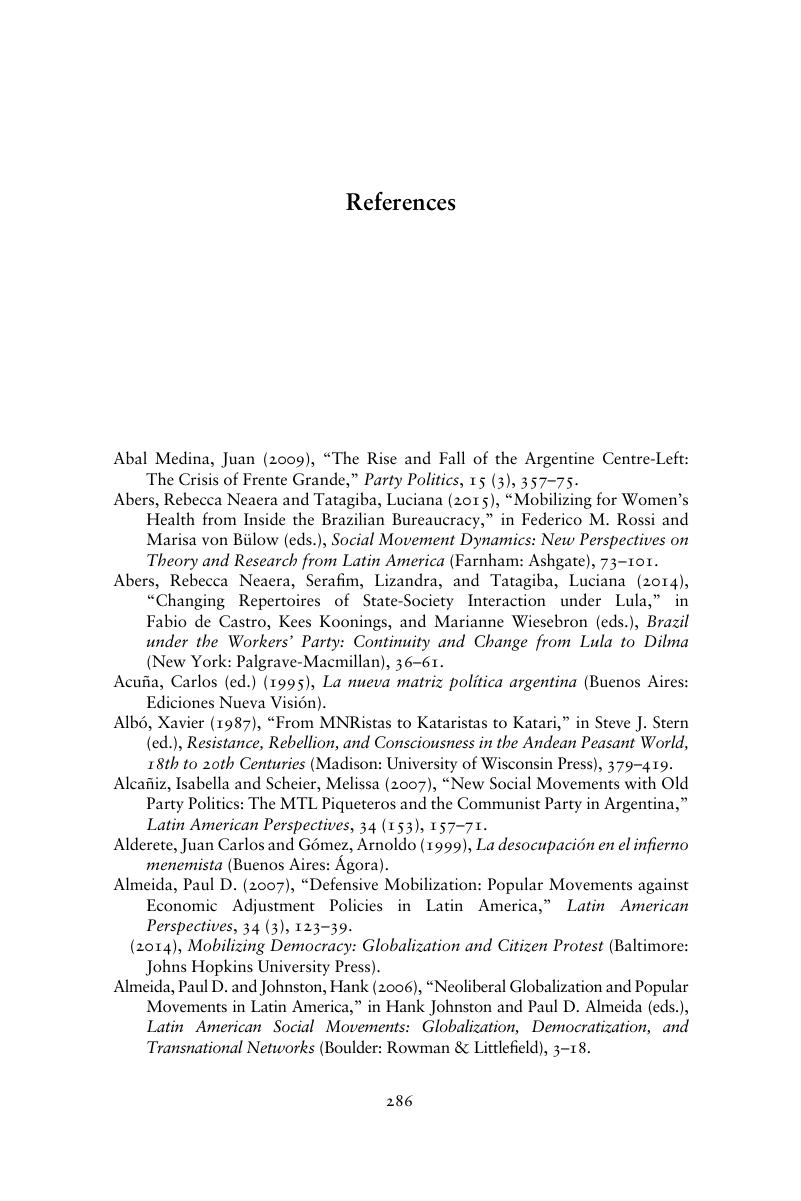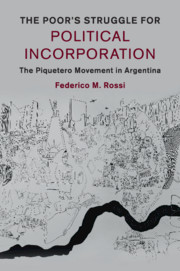Book contents
- The Poor’s Struggle for Political Incorporation
- Cambridge Studies in Contentious Politics
- The Poor’s Struggle for Political Incorporation
- Copyright page
- Contents
- Figures
- Maps
- Tables
- Preface
- Acknowledgments
- Abbreviations
- Part I Theoretical Framework
- Part II The Second Incorporation in Argentina
- Part III Comparisons and Conclusions
- Appendix Networks for the Constitution of the Piquetero Movement
- References
- Index
- Books in the Series (continued from p. ii)
- References
References
Published online by Cambridge University Press: 29 September 2017
- The Poor’s Struggle for Political Incorporation
- Cambridge Studies in Contentious Politics
- The Poor’s Struggle for Political Incorporation
- Copyright page
- Contents
- Figures
- Maps
- Tables
- Preface
- Acknowledgments
- Abbreviations
- Part I Theoretical Framework
- Part II The Second Incorporation in Argentina
- Part III Comparisons and Conclusions
- Appendix Networks for the Constitution of the Piquetero Movement
- References
- Index
- Books in the Series (continued from p. ii)
- References
Summary

- Type
- Chapter
- Information
- The Poor's Struggle for Political IncorporationThe Piquetero Movement in Argentina, pp. 280 - 285Publisher: Cambridge University PressPrint publication year: 2017



